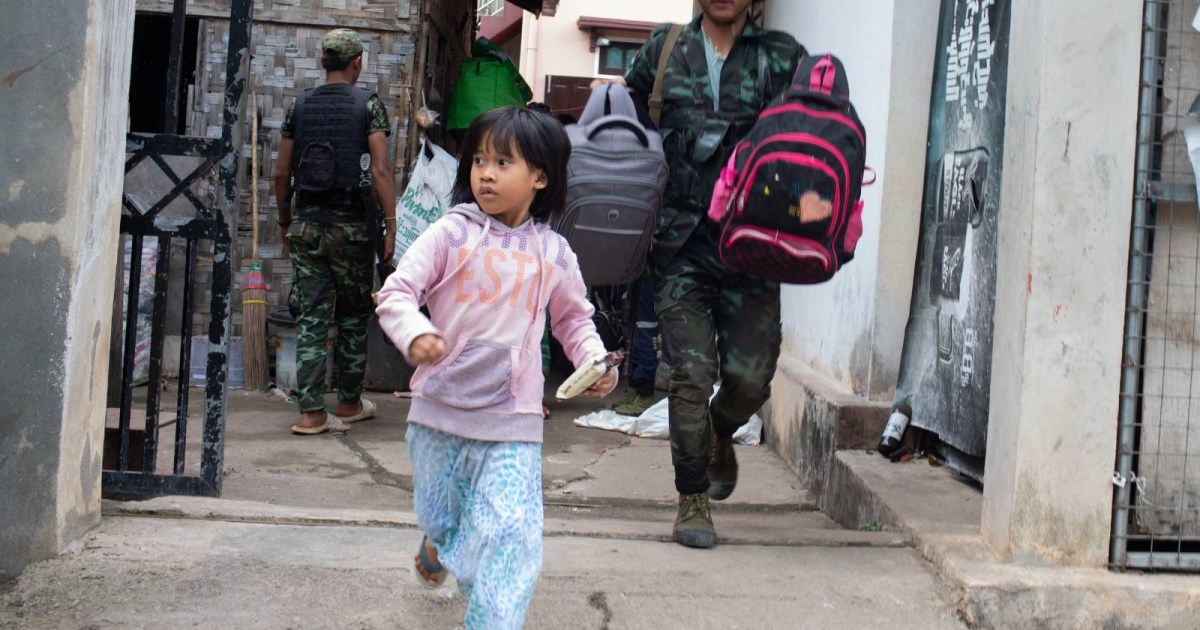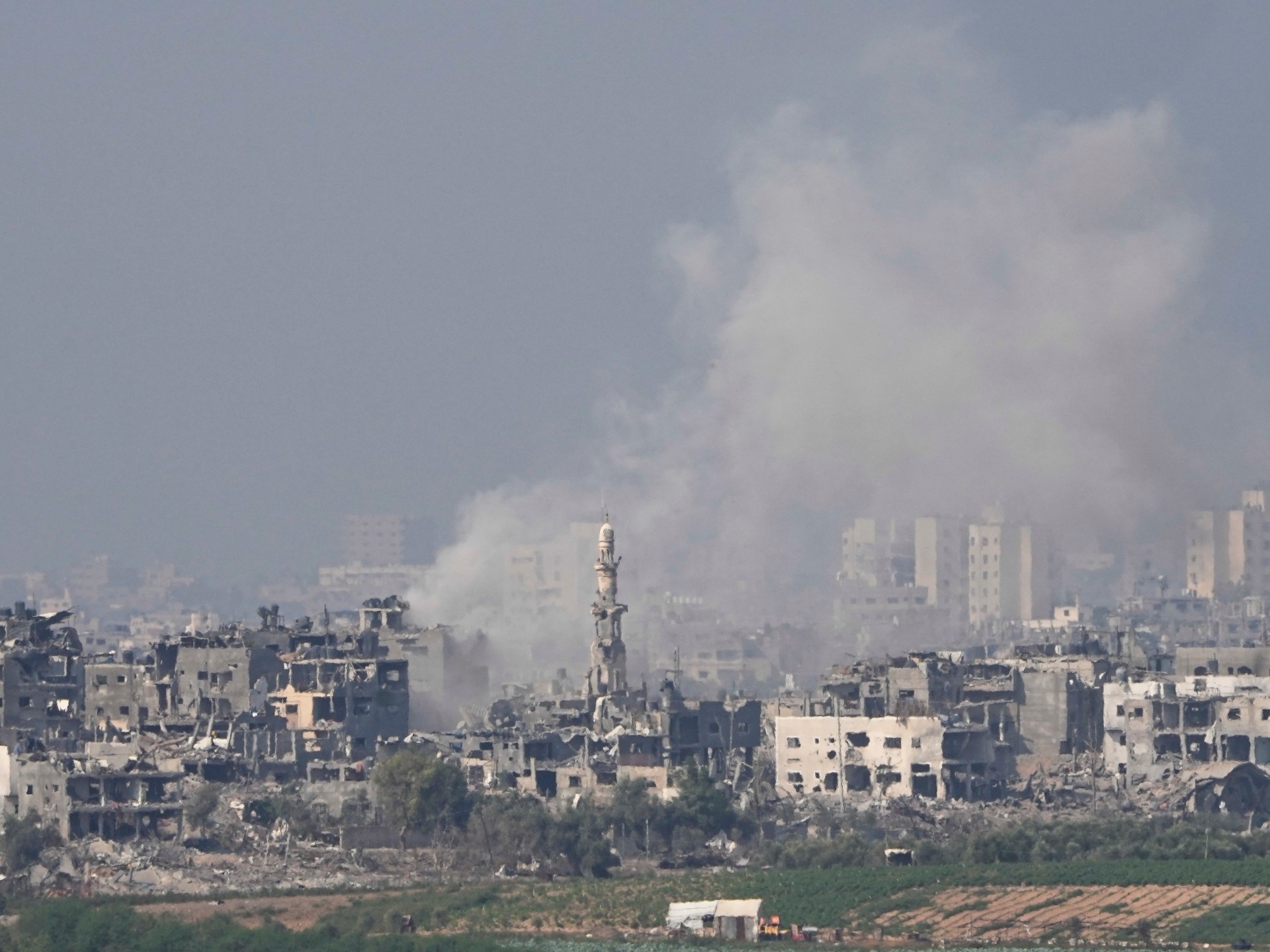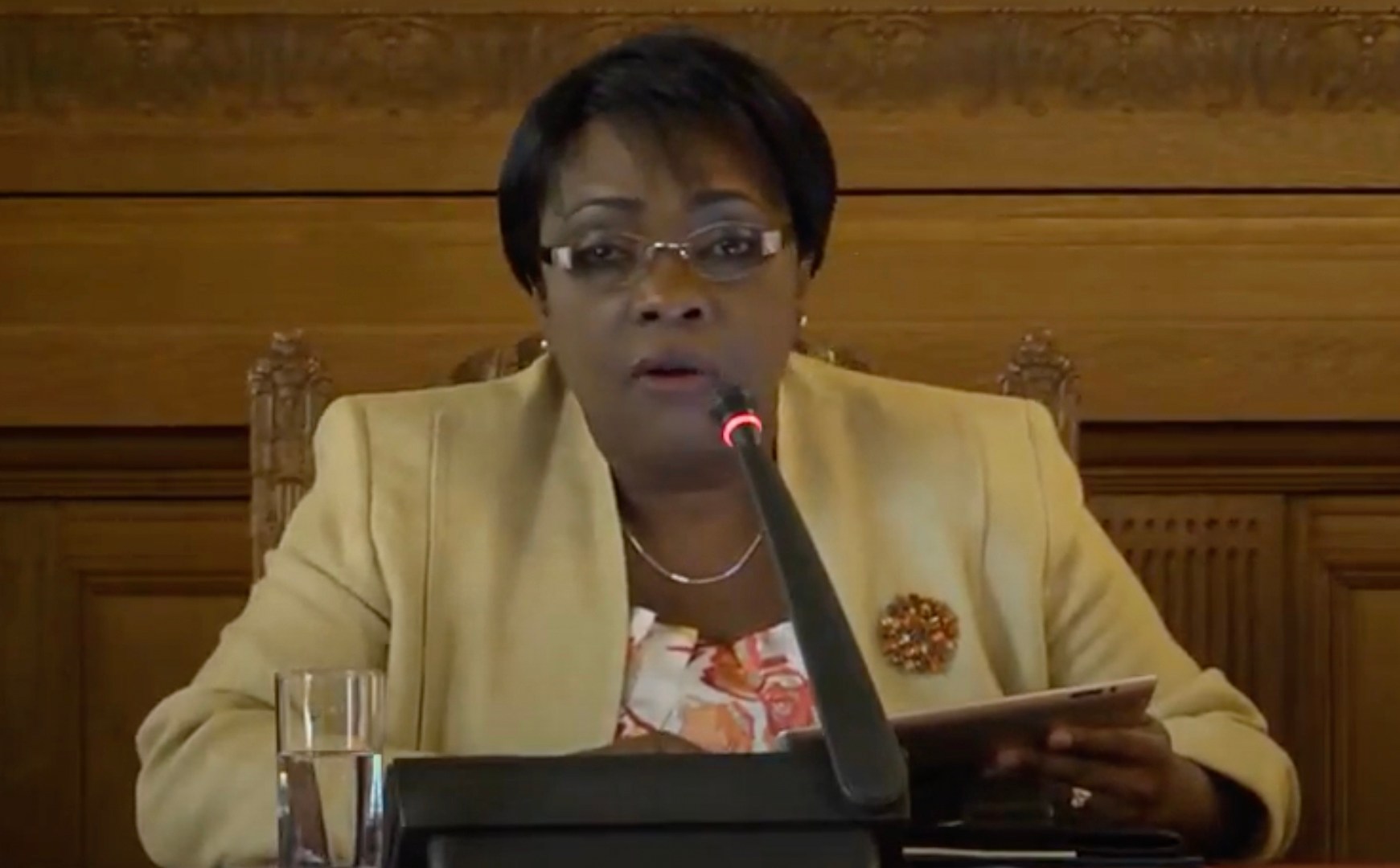‘Fighting is all around’: Myanmar faces deepening humanitarian crisis
In late October, Sai Lam had an uneasy feeling.
The Myanmar National Democratic Alliance Army (MNDAA), an ethnic armed organisation operating in Myanmar’s northern Shan State, was massing forces near his village on the Chinese border and he sensed that fighting was imminent.
So the 27-year-old, who had already secured a job in the construction sector in China’s Yunnan province in order to support his family, decided to expedite his plan.
He travelled from his village near the town of Mong Ko up to the border gate of Muse, and then crossed into China province using a temporary border pass.
His wife and mother, meanwhile, stayed behind to look after their farmland and newborn baby.
Days later, the MNDAA, together with its allies the Ta’ang National Liberation Army and the Arakan Army, launched Operation 1027, a joint offensive on military outposts in northern Shan State. Sai Lam’s family were forced to flee at dawn on October 27. They returned 10 days later, after the MNDAA had declared control over Mong Ko and the surrounding villages.
Although the situation around Mong Ko has calmed, the military has relentlessly attacked other areas where it has lost ground, including the nearby town of Namkham, which it bombed on December 1 and again a week later. Worrying that the military could also attack Mong Ko, Sai Lam wants to bring his family to China, but they are unable to flee, because the roads out are now inaccessible due to the fighting.
“They are still very scared and alert at all times because the military often fires heavy artillery and bombs from jets,” he said.
Despite the challenges his family has endured, Sai Lam continues to support the ongoing resistance to the military, which seized power from the elected government in February 2021. “We are being oppressed, so we don’t want the military to win,” he said. “We expect that if the military loses and local resistance forces gain control, we may have more freedom and opportunities.”
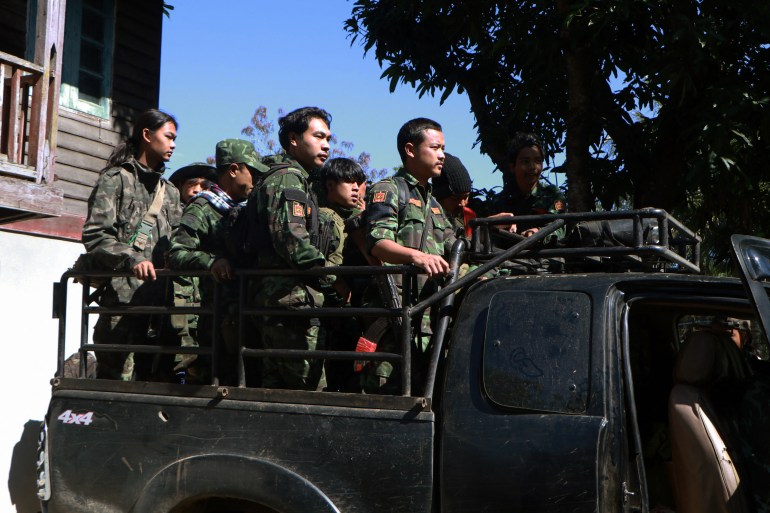
He and others interviewed for this report have been given pseudonyms due to the risk of military retaliation.
Since the start of Operation 1027, Myanmar has seen the most significant escalation in hostilities across the country since the coup, which sparked a widespread armed uprising. Resistance forces have in recent weeks managed to overtake hundreds of military outposts, including strategic border crossings with China and India. They are also closing in on Loikaw, the Karenni State capital, as well as Laukkai, an enclave notorious for transnational human trafficking and online scams.
Analysts now say that the military is at its weakest since the coup, with some even suggesting its imminent collapse. But alongside resistance gains, there has been a serious humanitarian cost. From October 26 to December 8, more than 578,000 people were newly displaced on top of nearly 2 million who were already displaced before the surge in fighting according to the United Nations, which said 363 civilians had been killed and 461 injured since late October.
And at a time when UN agencies and international nongovernmental organisations have struggled to reach affected populations, it is community-based organisations, charity groups and local volunteers who are taking life-threatening risks to help civilians.
“We all know that doing this kind of work is very dangerous, but if we don’t do it, there’s no one,” said Nway Thitsar, who works with a Christian faith-based organisation operating in northern Shan State to deliver food aid. “I can hear the sounds of bombing and gunfire all the time,” she added. “[But] I’m still safe enough that I can help people facing danger.”
No refuge
Even before the start of Operation 1027, Myanmar was experiencing unprecedented levels of armed conflict and a humanitarian crisis. Within months of the coup, autonomy-seeking ethnic armed organisations had joined forces with newly-formed groups, commonly known as people’s defence forces, to drive the military from power and establish a federal democracy.
In response, the military scaled up its use of “four cuts,” a strategy it has long employed against ethnic minorities in the country’s border areas and which seeks to starve resistance groups of food, funds, intelligence and recruits by going after their civilian support base.
Since the coup, it has bombed schools, hospitals and displacement camps across the country, burned tens of thousands of homes, and committed widespread atrocities including torture and mass executions, according to the UN. In March this year, its human rights office found that the military’s use of four cuts was driving a “perpetual human rights crisis” across Myanmar.
The crisis has only worsened in recent weeks.
In Shan State, some of the most intense fighting has been near Laukkai, one of several criminal hubs along Myanmar’s eastern border run by Chinese gangs.
Capitalising on China’s desire to crack down on the industry, which also involves the large-scale trafficking of Chinese nationals, resistance groups have declared combating cybercrime as one of their goals. As they close in on Laukkai, the city has seen a mass exodus, but those fleeing face a perilous journey. On November 11 and 22, shelling killed multiple civilians as they attempted to leave by car.
There are also few places of refuge. About 40,000 people have taken shelter in an autonomous region run by the United Wa State Army, Myanmar’s most powerful ethnic armed organisation, but most displaced people are stranded.
About 50,000 are camping under tarpaulin sheets at the border, where China built an electrified metal fence topped with razor wire during the pandemic. On November 25, Chinese authorities fired tear gas to disperse the displaced, but most have nowhere else to go.
Some people also remain trapped in Laukkai, where many are squatting in unfinished construction sites, according to Nway Thitsar, whose organisation is working to send them food in spite of roadblocks, checkpoints, telecommunications outages and active conflict.
Their funds are also being syphoned off on inflated fuel costs. “If we go to one site which has around 100 migrant workers, the cost of petrol to get there could have fed another 100 people,” said Nway Thitsar. “We feel like it’s a waste.”
Many UN agencies and international organisations, meanwhile, remain confined to their offices in northern Shan State’s largest city, Lashio, according to a national staff member of an INGO who spoke on condition of anonymity as he was not authorised to speak on behalf of his organisation.
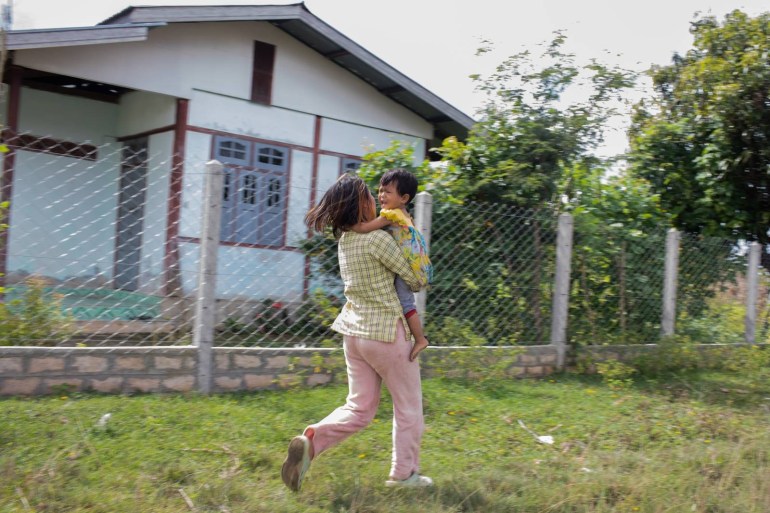
He said that safety precautions and operational challenges had left many international organisations unable to respond to needs in the worst-affected areas.
“Our organisation avoids risks, so we only work inside Lashio,” he said. Most international organisations and UN agencies, he added, regard the military as the de facto authority and rely on its permission to travel or distribute aid even though it commonly restricts access. “They only go and do activities which the military allows,” he said.
‘Screaming for cross-border aid’
Fighting has also escalated in Myanmar’s southeastern Karenni State and in northwestern Chin State, where, as in other parts of the country, the military has responded with disproportionate force.
As soon as resistance forces began capturing military bases in the Karenni State capital of Loikaw, the military began bombing the city and surrounding areas in an ongoing campaign that has displaced thousands and resulted in the destruction of the city’s market and other infrastructure. In total, Karenni resistance forces claim that since they scaled up their operations on November 11, the military has conducted at least 477 air strikes on the Loikaw area.
In Chin State, it has acted similarly, bombing the towns of Lalienpi, Paletwa and Rezua following resistance gains, and causing significant hardship for residents even though most had already fled. Salai Thomas, who serves as secretary of the Zotung Federal Council, a resistance-affiliated civilian administration in central and southern Chin State, said the military’s air attack on Rezua on November 29 destroyed 60 homes.
“We announced to the villagers to evacuate three days in advance, so when we seized the military base and police station…villagers were not there,” he said. “When people fled from the village, they couldn’t bring much with them. We are trying our best to bring them back, but they aren’t able to return yet because the price of petrol has increased a lot.”
In other cases, the military has targeted villages far from the fighting. On November 15, its air attack on Waylu village in the Matupi township killed 11 civilians including eight children, according to the township’s resistance-affiliated civilian administration.
According to Myengei, who works with a women-focused humanitarian and advocacy organisation operating in central and western Myanmar, and who is going by a nickname, it has become increasingly difficult and dangerous to reach many areas affected by the crisis because of roadblocks, telecommunications outages and military surveillance.
Still, she said that local responders were finding a way to operate by maintaining a low profile, at times in collaboration with anti-coup groups, nonprofit organisations, charity groups and volunteers across the India border – despite the reluctance of international donors to support such activities. “We’re screaming for cross-border aid but donors, foreign governments and the international community don’t take it seriously,” she said.
The situation for those who fled to Mizoram, India is also precarious. On November 13, stray artillery fire from the fighting in Chin State’s border town of Rikhawdar hit a refugee camp in the town of Zokhawthar, killing one man and injuring two children.
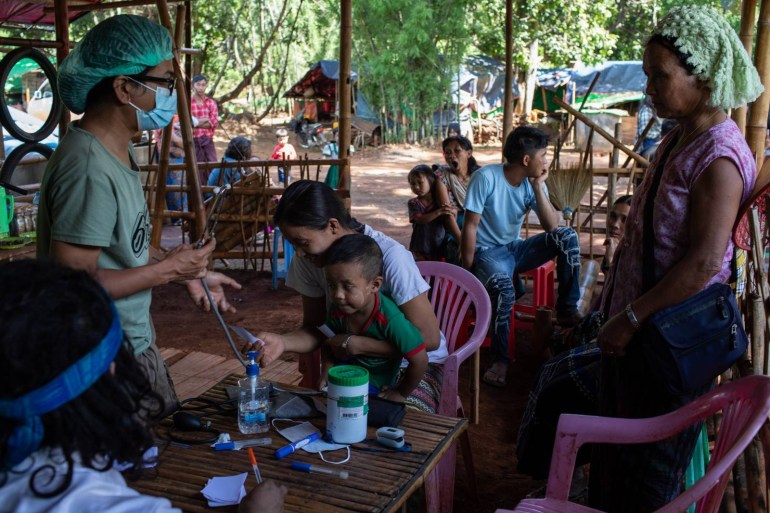
And although Mizoram has offered refuge and informal support to the roughly 50,000 Myanmar nationals who have taken refuge there since the coup, the state receives no support from the central Indian government, and humanitarian resources were already stretched thin before the recent influx. “When the refugees arrived unexpectedly, there were many challenges,” said Myengei. “We’re lucky that we received help from churches and youth, but [the situation] is not very good in the long run.”
Fighting for survival
Humanitarian needs are also climbing in the country’s western Rakhine State, where a year-long ceasefire between the Arakan Army and military collapsed last month. Even before that, some 200,000 people were living in camps, mostly Rohingya who have been denied freedom of movement since 2012.
Then in May of this year, a deadly cyclone hit the Rakhine coast. “We didn’t even have a chance to properly respond to the victims of Cyclone Mocha and then we have war again,” said Ko Zaw, a humanitarian worker from Rakhine State who is going by his nickname.
He and others expressed particular concerns about food security. Not only has farming been affected by the conflict and displacement; but since the resumption of conflict, the military has also blocked roads and waterways and shelled the markets in the towns of Pauktaw and Ponnagyun.
A vendor at the Ponnagyun market, who fled the town with the rest of its residents and whose shop lot burned down with the rest of the market, told Al Jazeera that she is sheltering with relatives in a nearby village. “All I want for the future is peace and a safe place,” she said.
In the Minbya township, where at least four civilians have been killed by shelling and the main hospital was hit by artillery fire on November 17, a Rohingya woman also described living in fear and uncertainty.
“We can’t get out of Minbya right now. The fighting is all around,” she said. “I can hear bombing and gunfire every day, but I don’t know where they’re fighting. There’s no internet and the phone also often doesn’t work. I worry about everything.”
Hla Sein, a local humanitarian responder based in northern Rakhine State, who is going by a pseudonym, described working to distribute rice and supplies in areas where there has been limited international assistance. “We don’t get aid from any big organisations. We’re running our support with the donations we receive from individual and small local groups,” he told Al Jazeera from the top of a hill, which he climbed to get a faint signal on the only operating mobile network.
He said he has struggled to access cash amid ongoing banking restrictions, while the military has also blocked the movement of goods. “Before, they only had ‘four cuts’, but now, they cut everything,” he said “We only hope that civilians can pass through this period alive.”
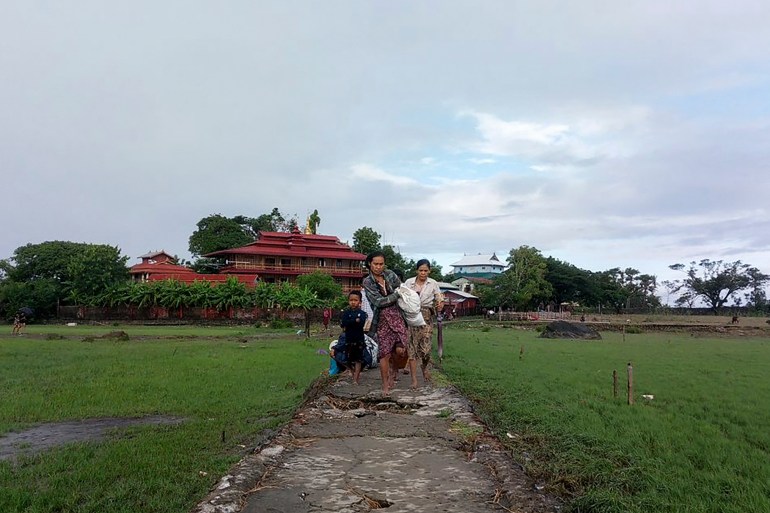
He also has to work with a low profile, because he is delivering aid in coordination with a humanitarian office established through the Arakan Army’s political wing. “We can’t do our work openly. Even donors are afraid to donate openly,” he said.
Ko Zaw, who coordinates informal networks delivering aid across the state, said it is largely local organisations, individuals and charity groups like Hla Sein’s that are able to meet needs on the ground, while international organisations are hindered by more rigid protocols and policies that favour engagement with the military. “The international humanitarian community could not prepare enough [for] the emergency response,” he said. “Even though the situation in Myanmar is changing… the humanitarian response is still traditional.”
Despite the extensive challenges, Ko Zaw said that his experience has shown it is still possible to deliver aid by taking a flexible and pragmatic approach, and called on international donors to put more faith in the local response. “This is our land. We know what we can do. We know where we can send the supplies,” he said. “Our priority is how we can send emergency assistance to the people who are in need.”

